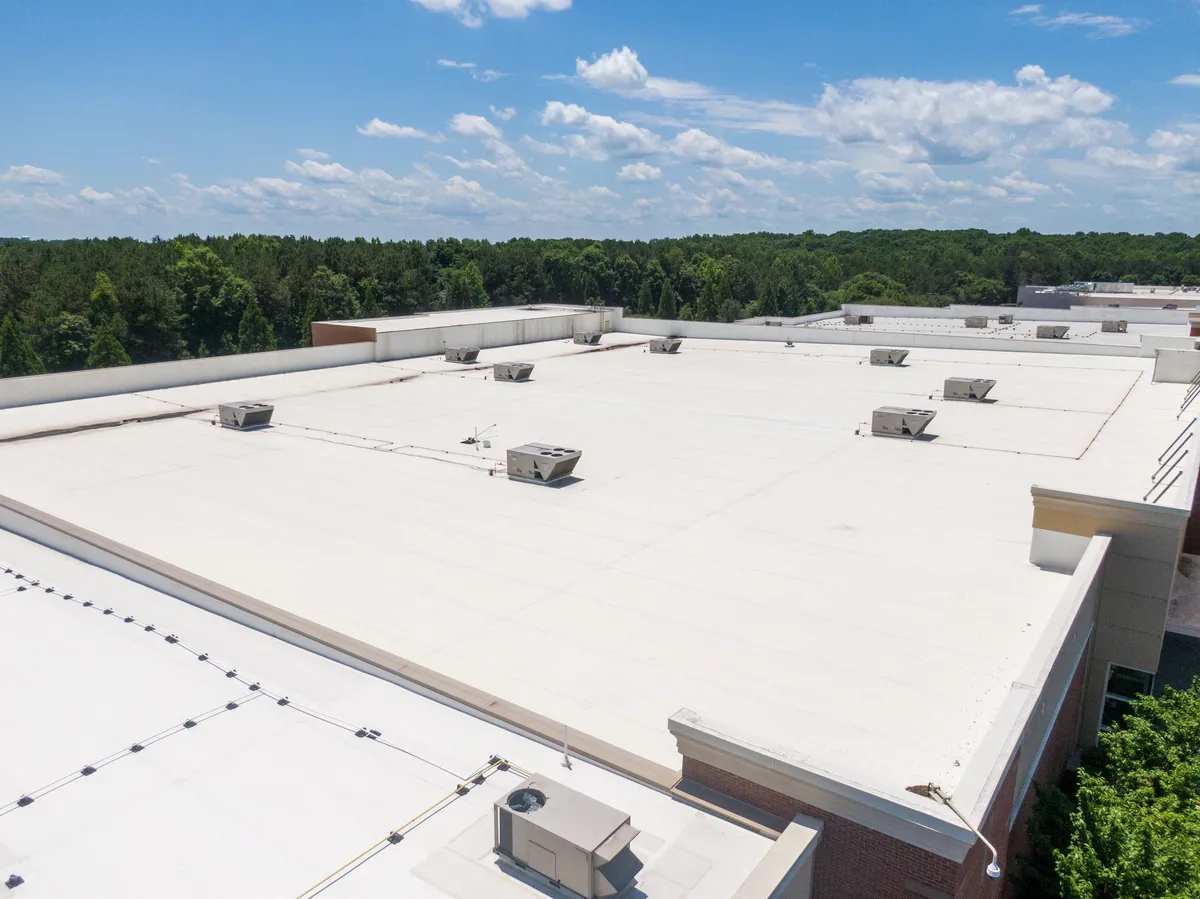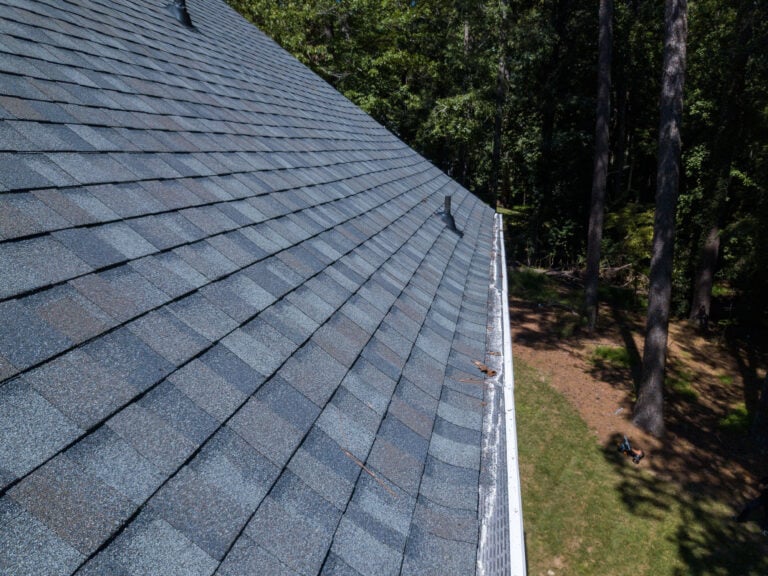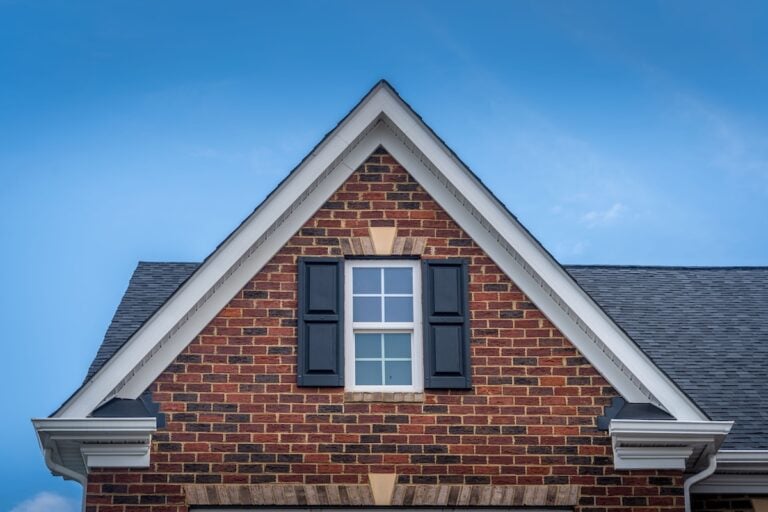When it comes to choosing the right roofing material for your property, the decision is far from simple. Commercial property managers often find themselves weighing various options to ensure:
- Longevity
- Cost-effectiveness
- Overall performance
Two of the most commonly debated materials in the flat roofing industry are TPO (Thermoplastic Olefin) and EPDM (Ethylene Propylene Diene Monomer). Both offer unique benefits and have distinct drawbacks. This guide aims to help property managers make informed decisions by providing an in-depth comparison of TPO vs. EPDM roofing systems.
Introduction to TPO and EPDM Roofing Systems
What is TPO Roofing?
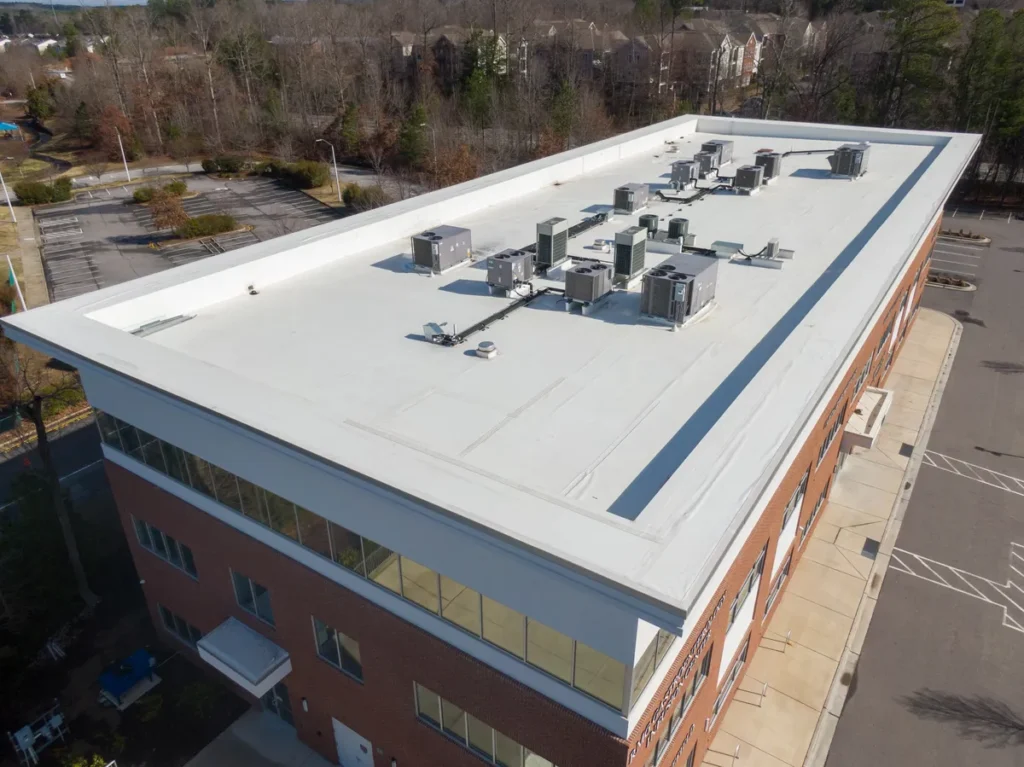
TPO (Thermoplastic Olefin) is a single-ply roofing membrane known for its durability and energy efficiency. Composed of a blend of polypropylene and ethylene-propylene rubber, TPO is often reinforced with polyester fabric for added strength and stability. It is typically white, which helps reflect sunlight and reduce heat buildup.
Key Features of TPO Roofing:
- Durability: Resistant to punctures, tears, and impacts.
- Energy Efficiency: Reflects UV rays, reducing cooling costs.
- Flexibility: Can adapt to temperature fluctuations without cracking.
- Ease of Installation: Heat-weldable seams for a strong, watertight bond.
What is EPDM Roofing?
EPDM (Ethylene Propylene Diene Monomer) is another single-ply roofing membrane, but it is made from synthetic rubber. Available in both black and white, EPDM has been a staple in the roofing industry for over 50 years due to its proven performance and reliability.
Key Features of EPDM Roofing:
- Longevity: Known for its long lifespan, often exceeding 30 years.
- Weather Resistance: Excellent resistance to extreme weather conditions.
- Flexibility: Maintains flexibility in freezing temperatures and remains stable in high temperatures.
- Ease of Repair: Simple to patch and repair if damaged.
Comparing TPO and EPDM Roofing Systems
To provide a comprehensive comparison of TPO vs. EPDM, we’ll evaluate these materials based on several critical factors:
Durability and Longevity
- TPO membranes are designed to be highly durable, with resistance to punctures, impacts, and tears.
- The reinforced polyester fabric adds structural strength, making it suitable for roofs with moderate foot traffic.
- Typical lifespan ranges from 15 to 20 years, but advancements in manufacturing are pushing this closer to 25 years.
EPDM Roofing:
- EPDM is renowned for its exceptional longevity, often lasting 30 years or more with proper maintenance.
- Its synthetic rubber composition provides excellent resistance to UV radiation, ozone, and extreme weather conditions.
- While not as puncture-resistant as TPO, EPDM’s flexibility helps it withstand temperature fluctuations without cracking.
🏆 Winner:
- When it comes to longevity, EPDM holds a slight edge over TPO, thanks to its proven track record and resistance to environmental factors.
Energy Efficiency
TPO Roofing:
- TPO is known for its energy-efficient properties, primarily due to its white reflective surface, which reduces heat absorption.
- This reflective quality helps lower cooling costs during hot summer months, making it an attractive option for properties in warm climates.
EPDM Roofing:
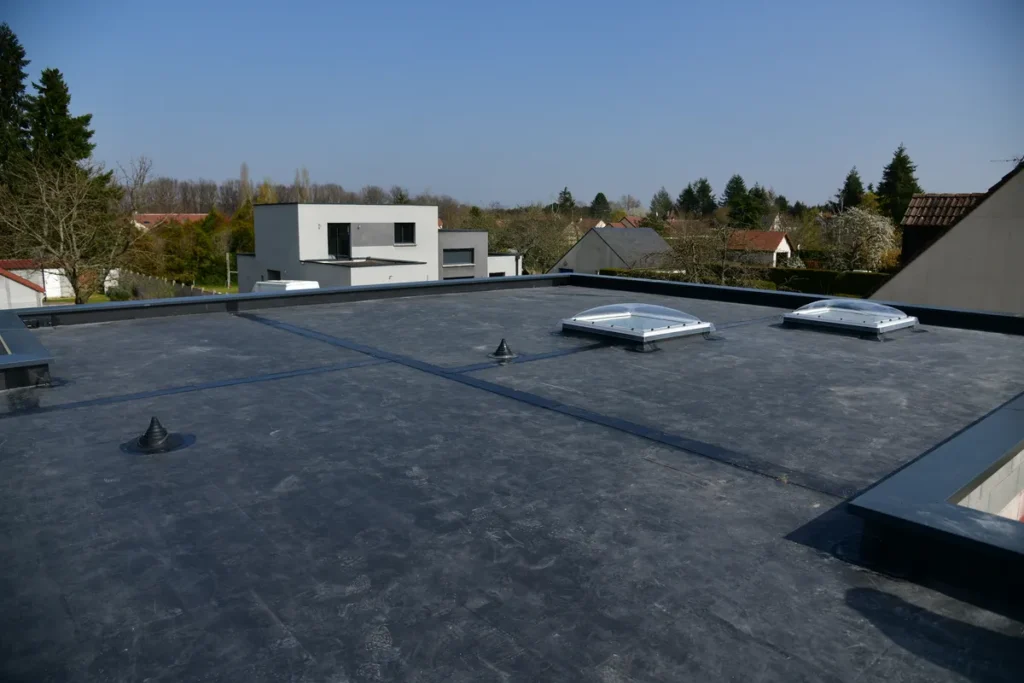
- Traditional black EPDM absorbs heat, which can be advantageous in colder climates by reducing heating costs.
- White EPDM options are available, offering reflective properties similar to TPO, but they are less common and may be more expensive.
🏆 Winner:
- In terms of energy efficiency, TPO is the clear winner, especially for properties in warmer regions seeking to reduce cooling expenses.
Installation and Maintenance
TPO Roofing:
- TPO membranes are typically installed using heat-welded seams, creating a strong, watertight bond.
- Heat welding requires specialized equipment and trained installers, which may increase labor costs.
- Once installed, TPO requires minimal maintenance, but inspections are recommended to ensure seams and flashings remain intact.
EPDM Roofing:
- EPDM membranes are mechanically fastened, fully adhered, or ballasted, offering flexibility in installation methods.
- Installation is straightforward and can be performed by most roofing contractors, potentially reducing labor costs.
- EPDM is easy to repair if punctured or damaged, with simple patching techniques available.
🏆 Winner:
- EPDM’s flexibility in installation methods and ease of repair make it a favorable choice for property managers seeking a hassle-free roofing solution.
Cost
TPO Roofing:
- Initial material costs for TPO are generally higher than EPDM.
- Installation costs may also be higher due to the specialized equipment and trained labor required for heat welding.
- However, TPO’s energy efficiency can lead to long-term savings on cooling costs.
EPDM Roofing:
- EPDM tends to be more cost-effective in terms of both material and installation expenses.
- The simplicity of installation methods can further reduce labor costs.
- While EPDM may not offer the same energy savings as TPO, its lower upfront costs make it an attractive option for budget-conscious property managers.
🏆 Winner:
- EPDM wins in terms of initial cost-effectiveness, making it a practical choice for property managers looking to minimize upfront expenses.
Environmental Impact
TPO Roofing:
- TPO is considered environmentally friendly due to its reflective properties, which reduce energy consumption and greenhouse gas emissions.
- Many TPO membranes are also recyclable, contributing to sustainability efforts.
EPDM Roofing:
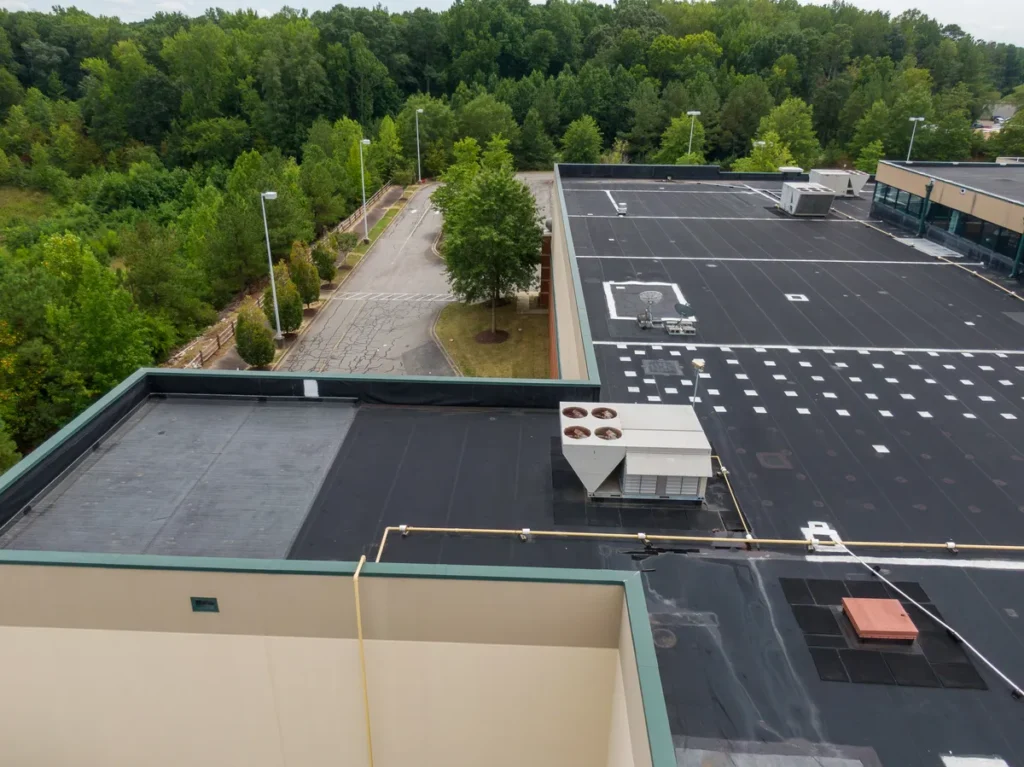
- EPDM is known for its longevity, which reduces the frequency of roof replacements and associated waste.
- While not typically recyclable, EPDM’s long lifespan and low maintenance requirements contribute to its overall sustainability.
🏆 Winner:
- Both TPO and EPDM have environmentally friendly attributes, but TPO’s recyclability and energy efficiency give it a slight edge.
Performance in Different Climates
TPO Roofing:
- TPO’s reflective surface makes it an excellent choice for properties in warm climates, as it helps reduce cooling costs.
- It performs well in a range of temperatures but may be more susceptible to UV degradation in extremely hot climates.
EPDM Roofing:
- EPDM’s black membrane is ideal for colder climates, as it absorbs heat and reduces heating costs.
- Its flexibility allows it to withstand extreme temperature fluctuations, making it suitable for various climates.
🏆 Winner:
- The choice between TPO and EPDM depends on your property’s climate. TPO is better for warm regions, while EPDM excels in colder environments.
Final Results?
Both TPO and EPDM roofing systems offer unique advantages and have their respective drawbacks. The choice between TPO and EPDM ultimately depends on your property’s specific needs, climate, and budget considerations.
TPO Roofing:
- Best for properties in warm climates seeking energy efficiency and durability.
- Higher initial costs but potential long-term savings on cooling expenses.
EPDM Roofing:
- Ideal for properties in colder climates needing a cost-effective and long-lasting solution.
- Lower upfront costs and straightforward installation and maintenance.
As a property manager, it’s essential to carefully evaluate your property’s requirements and consult with experienced roofing professionals to make an informed decision. Both TPO and EPDM have proven their worth in the industry, and with the right choice, you can ensure a reliable and efficient roofing system for years to come.
Ready to take the next step? Contact our team of roofing experts at Palladium Roofing today to discuss your specific needs and get a free consultation. Let’s make sure your property is protected with the best roofing solution available.


